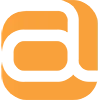Having a successful website is not difficult; you just need to do the simple things really well. One of the most important elements is to ensure people are finding you on the search engines. If your site is not listed at all or not listed on the first few pages, you simply will not get the number of visitors to convert to enquiries — it’s a numbers game.
- Step #1: Make sure the search engines can find your web pages
In order for the search engines to list your web pages, they first need to find them! This is achieved by making sure there are simple links from all your main pages to all the other pages. Search engines follow links. If the links are anything but simple text links, you are making it difficult for search engines to find your web pages.
The easiest way to achieve this is to include a link to your website ‘site map’ on every web page.
A site map is simply a web page that lists all your website pages as simple text links. The site map is a great way to let the search engines find, and therefore list all your website pages, this will vastly increase the chances of potential customers finding your website in the first place.
- Step #2: Optimise your web pages for your chosen keyphrases
Search engines will not list your web page highly for your chosen keyphrase, unless your page content is relevant to the keyphrase in question. This is how to optimise your web page content:
Meta-data: Make sure the meta tags for the web page (page title, keywords, and description) contain your chosen keyphrase. The optimum number of characters for the page title is 65 and for the description is 150.
Page content: All page content should be relevant and concise. It should be written for your potential customer and then optimised for the search engines. When writing your copy try not to ‘overload’ it with keyphrases. You should strike a fine balance when optimising, trying not to destroy the original meaning or make it read badly.
Given that, your web pages should be constructed to include a page title in the ‘Header level 1’ tag, with a maximum of 65 characters which should contain your chosen keyphrase. Some introductory content of up to 255 characters should be included in a ‘header level 2 tag’ which should also contain your chosen keyphrase. The body copy should repeat your chosen keyphrase at least 3 times - but do not over do it! A maximum of say 6 repeats should be OK, go for around 1000 words.
You can include another two keyphrases in the web page, but work this into the body copy and meta-keywords only.
Some of this is a bit technical (sorry) if you are unsure please contact your web development company for advice.
- Step #3: Increase the acceptance of your web pages by the search engines
Search engines, especially the leading ones, like you to have other websites ‘recommend’ you. This is achieved by having links from other (relevant) websites linking to your website. This is termed an ‘inbound link’ and helps to increase ‘page rank’.
The easiest way to get good quality inbound links to your website is to search for relevant websites and directories, then get your self added to those websites / directories.
You can increase the effect of these inbound links by making the link to your website contain your main keyphrase, then link directly to the page that is optimised for that keyphrase.
I hope you’ve taken time to scan through this article, and more importantly you’re able to utilise the technical knowhow and give your online marketing a boost!
To receive tips and secrets to help you maximise the performance of your website direct to your inbox, add your self to our tips/ secrets alert list here.
Please forward a link to this page to anyone you know who could do with more enquiries from their website.
Do you want to maximise the performance of your website but need more help or advice? Give Daniel a call on 0114 282 3444 … or contact us now.
